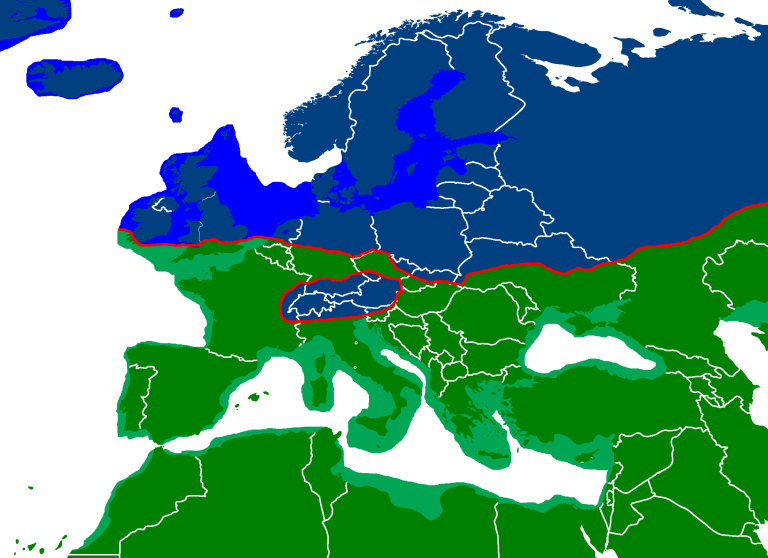Anatomically modern human dispersals into Europe during MIS 3
18 March 2024
Habitat Suitability models allow the investigation of human dispersal on the Europe scale. Climate change and climate variability influenced human dispersal and mobility. The percentage of Europe habitable landmass shrank considerably during glacial stadials.

The initial large-scale dispersal of Anatomically Modern Humans (AMHs) into Europe, associated with the Aurignacian technocomplex, occurred during Marine Isotope Stage 3 (MIS 3), a critically unstable climatic period. The impact of climate change (millennial-scale Dansgaard-Oeschger events) and climate variability (annual and seasonal variation) on the mobility and initial dispersal of AMHs on the continent is not fully demonstrated. Here we show that both climate change and variability affected the spatial behavior of Aurignacian groups and structured their arrival on the continent. Using Random Forest, a machine learning algorithm, we produced habitat suitability (HS) models for AMHs under stadial (GS) and interstadial (GI) climate conditions. These models demonstrate that climate variability was a key factor governing the spatial behavior of human groups across MIS 3. They also illustrate that the structure and distribution of suitable habitat in Europe were affected by climatic conditions, with implications in terms of our species’ adaptability and behavioral plasticity. Finally, our results support the suggestion that initial dispersals followed a Mediterranean coastal route, likely under interstadial conditions.
Simon Paquin, Benjamin Albouy, Masa Kageyama, Mathieu Vrac, Ariane Burke
 Close
Close

